By Tim Collyer, Chartered Financial Planner at Montgomery Charles
Many parents and grandparents are happy to give money to their children or grandchildren during their lifetime – whether it’s to help with a house deposit, education, or just as a generous gift.
But what most people don’t realise is that without proper records, even a single forgotten note in a drawer could result in HM Revenue & Customs (HMRC) collecting up to 40% of that gift in tax after you pass away.
This short guide explains, in plain English, how keeping a simple ‘gift diary’ (using the IHT403 form) can help your family avoid unnecessary Inheritance Tax (IHT).
Why your gift diary is potentially more valuable than the gift
Every time you give away money, investments, or pay for something significant on someone else’s behalf, it could count as a “gift” for tax purposes. When you die, HMRC may look back at these gifts to see if tax is owed.
If your executor (the person handling your estate) can’t prove which tax-free allowance you intended to use, the gift might:
- Eat into your £325,000 nil-rate band (NRB)
- Or, if large, trigger extra tax inside a discretionary trust
A simple note made at the time of the gift – ideally using the IHT403 form – can save your family months of stress—and potentially thousands of pounds in tax.
The two rules that catch people out
1. Taper relief is NOT a discount voucher
Many people believe that if they survive three years after making a gift, the tax starts to reduce. That’s only partly true.
- Taper relief only reduces the tax on a gift – not the value of the gift itself.
- Gifts under the £325,000 threshold don’t benefit from taper relief at all – they stay at full value for seven years.
Example: You give your child £100,000 and die six years later. That £100,000 still reduces your tax-free allowance by the full amount. No tapering applies.
2. Chargeable Lifetime Transfers (CLTs) can boomerang back on you
If you put money into a discretionary trust, it’s called a Chargeable Lifetime Transfer (CLT). You usually don’t pay tax at the time if the gift is under the £325,000 threshold.
But here’s the catch: if you make another large gift within seven years, that earlier trust gift ‘uses up’ your tax-free allowance first. This can cause the second gift to be taxed at up to 40%, even if both gifts were under the threshold when made.
Without clear records of dates and amounts, your executor may have to assume the worst-case scenario.
Three everyday examples
(If viewing on a phone, please rotate your screen to landscape)
| Gift story | What people expect | What really happens | Pain point |
|---|---|---|---|
| Dad gives £300,000 and lives a further 4 years | “Tax drops to 24% after 4 years” | No tax now, but the full £300,000 blocks the tax-free allowance for 7 years | Estate loses £120,000 of tax-free shelter |
| Same Dad adds £50,000 to a discretionary trust 3 years later | “Still under the limit, so no tax” | The trust uses up the same allowance again – later gifts taxed sooner | Risk of double-counting the allowance |
| Grandma gives £20,000 for a wedding but forgets to note it | “It’s a small gift—must be exempt” | Without a note, it’s treated as a normal gift and uses up allowance | Could add £8,000 in tax if she dies within 7 years |
Your two-minute, IHT403-powered record-keeping routine
- Write down: date, amount, recipient, and which exemption you believe applies (e.g., “annual £3,000 allowance”)
- Print or save bank statements or trust deeds as proof of value
- File everything – paper or digital – for 14 years if you ever used a discretionary trust; 7 years otherwise
- Tip: download form IHT403 from the gov.uk website. It is designed for executors but doubles as a perfect lifetime gift log
Why timing matters – and where Montgomery Charles can help
An adviser cannot change the seven-year clock, but they can
- Stage gifts so you recycle the NRB instead of stacking gifts inside one window
- Match gifts to allowances you may have overlooked (wedding, small-gift, or regular-income relief)
- Forecast the impact of a discretionary-trust top-up before you press the green button
If you’d like to know more, book a chat with us below. It’s a no-strings, complimentary opportunity to find out whether you should be taking action.
Any money invested carries an element of risk and you are not guaranteed to get back the money you invested. This article does not constitute advice and you should consult your financial adviser prior to any action.




